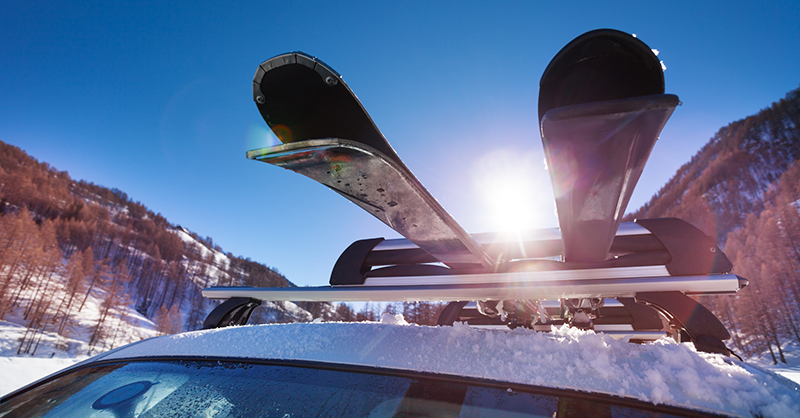Auto Racks Offer Convenience, Safety

You've packed your video discs and MP3 player, loaded up a cooler and stuffed the trunk full of belongings. What about that bike or ski equipment you want to take along?
Load it on top of your vehicle. All you need is a solid rack and the means to tie down everything safely. How do you choose the appropriate rack for your vehicle?
According to David Fee, senior director of market and product development at Yakima Product, installing a safe rack means more than bolting crossbars on your vehicle roof. Yakima was founded during the sports boom of the 1980s and has become one of the world's leading rack manufacturers.
"There's a significant amount of force on the vehicle from speed, crosswinds and road conditions," Fee said. "The safest approach means providing maximum fit or snugness for your specific vehicle model."
Racks consist of towers that connect to the roof, crossbars that connect between the towers and mounts that fasten items to the crossbars. The safety of the rack starts with how well and where the towers attach to your car, Fee said.
Manufacturers use different approaches for attaching the towers. Some may connect to the vehicle siderails or rain gutter. Others use preset factory mounting points or the door frame.
Fee provided the following guidelines when choosing the right rack for your vehicle:
- What kind of vehicle do you have? Check for a snug fit. The safest approach is to attach a rack designed to fit the contours, edges or frame of your specific vehicle, Fee said.
- What are you going to carry? People change their minds about what they want to carry. At first you might want to carry a snowboard. Later you may want to transport a bicycle. Make sure your rack offers different mounts that adapt to changing needs.
- What is the quality of rack materials? Sea spray, road salt and water can cause inferior materials to rust. Quality alloys and plastics can weather a variety of stressful climates.
- Does the rack pass the "shake test"? Grab the rack and jiggle it. Make sure the load is secure and the towers don't give. Look for steel and reinforced plastic, Fee said.
- What weather conditions do you expect? The materials used in the rack may need to stand up to extreme hot or extreme cold. Materials that become brittle or soft can loosen the rack and create a safety hazard.
- What kinds of roads are you traveling? Dirt roads or poorly maintained mountain roads put increased stress on the rack system. A heavy duty rack may be required.
- Does the rack system have locks and accessories for your changing requirements? Perhaps you start with a ski attachment and then decide to add a bicycle or kayak attachment. Some even offer a fairing to cut down wind noise.
- Does the rack provide a warranty against climate conditions? The better racks do.
"A quality rack that is properly installed and carefully loaded allows you to drive normally," Fee said. "Under most conditions you shouldn't have to adjust your driving habits to accommodate the rack."